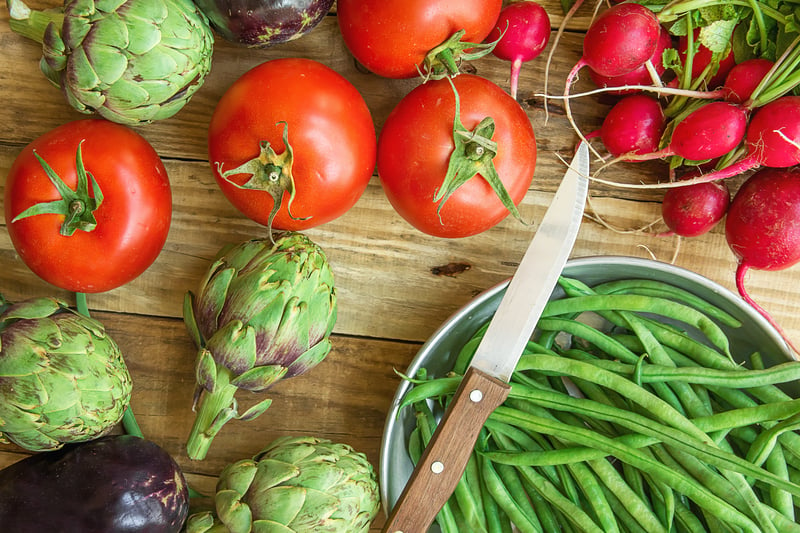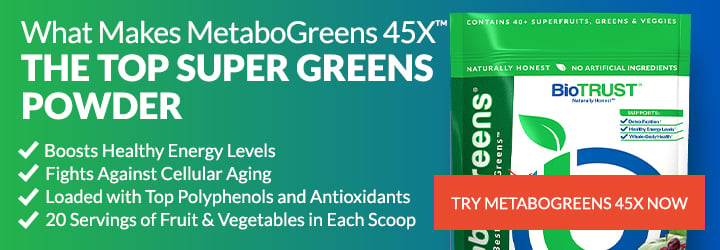9 Vegetables That Are Much Healthier Cooked Than Raw

Raw veggies: They can be intimidating, to say the least. Whether you are introducing new vegetables into your diet or simply just don’t care for them, raw vegetables can be daunting. Luckily, cooking your veggies can make eating them more approachable and tastier. Nonetheless, cooking has been viewed as the lesser option since eating “raw” has gone mainstream.
Eating raw refers to an eating pattern centered around consuming a majority of your food—you guessed it—raw. Most raw food diets are made primarily of fruits, vegetables, nuts, and seeds. The reason behind this popular eating trend is the idea that heating food destroys its nutrients and natural enzymes.
And, if you’re going to eat your veggies, you might as well eat them in a way so your body can extract the most nutrients possible from them. In many cases, that does means coming face to face with our fears and tackling veggies raw. But I have good news for you. Some vegetables can actually be much healthier cooked.
That’s right—cooked. We have heard time and time again that eating foods in their raw form is the best and most nutritious, but a handful of vegetables defy the odds and actually become more healthful when cooked. Here are nine to get you started:
9 Vegetables That Are Healthier Cooked
1. Spinach
Spinach is one of my favorite vegetables because it is so easy to incorporate into any meal—raw or cooked. However, cooked spinach may have the upper hand because cooking spinach actually helps boost the nutrient content. This is because breaking down the cell walls in spinach can make its nutrients more bioavailable. Cooked spinach provides more calcium, magnesium, and iron than raw. For instance, cooked spinach has 245 mg per cup of calcium, whereas raw spinach has 30 mg per cup.
2. Artichokes
Artichokes can be eaten raw or cooked. However, cooking artichokes, specifically by steaming, can increase artichoke’s antioxidant content to 15 times its originals raw content. 1 Some of the most prominent antioxidants found in artichokes are caffeoylquinic acids.
3. Mushrooms
Mushrooms are full of antioxidants, and cooking them enhances their antioxidant activity. One study found that cooked mushrooms had two times the amount of free polyphenolic content. 2
4. Tomatoes
Tomatoes are rich in lycopene, an antioxidant, which has been linked to improved heart and prostate health. Tomatoes provide even more absorbable lycopene when cooked. Since lycopene is a fat-soluble antioxidant, you can also increase your body’s absorption by consuming tomatoes with a healthy fat.
5. Carrots
When cooked with skin intact, the antioxidant content of carrots can rise up to three times compared to raw carrots. 3 Carrots are particularly high in beta-carotene, which is a substance the body converts into vitamin A.
6. Eggplant
Cooking eggplant produces numerous health benefits. Steaming eggplant alters its components, allowing the liver to more easily break down cholesterol and reduce its presence in the bloodstream. 4 Additionally, grilled eggplants retain higher amounts of chlorogenic acid, which slows down the release of glucose into the bloodstream. 5
7. Asparagus
Asparagus is packed with nutrients, including fiber, folate, and vitamins A, C, and K. Studies have also shown that cooking asparagus can increase antioxidant activity by up to 25%.
8. Brussel Sprouts
If you’re like me and love roasted Brussel Sprouts, you’re in luck. This is because cooking breaks down the glucosinolates into compounds called isothiocyanates, which have been researched and linked to many healthful benefits.
9. Green Beans
Green Beans are most commonly consumed cooked, which is beneficial considering some of their nutrients are amplified as a result of the cooking process. For example, steamed green beans may have greater cholesterol-lowering benefits than raw green beans. 4 Also baked green beans have increased antioxidant levels. 3
Not all cooking methods are equal since the different processes can affect the nutrient density as well. My favorite ways to cook my veggies are steaming or roasting. These two cooking methods can give your veggies different textures as well as maintain the integrity of the nutrients. In general, you want to avoid boiling your vegetables when possible because much of the water-soluble nutrients can seep into the water. However, if you do choose to boil, get creative and try to use the leftover liquid in other ways, like mixing it into a sauce, so you can still benefit from some of the lost nutrients.
When it comes down to it, nutrient absorption is the key. Improving nutrient absorption is critical because your body can only extract the nutrients it is digesting and absorbing from your food. Eating your food in ways that increase absorption can help ensure your body is optimally fueled and ready to go.
Although it’s ideally best to opt for preparation methods that give your body the most nutrient-dense version of your food, the truly best way to eat your veggies is the way you enjoy them most! There are other ways beyond the way you prepare your food to increase your body’s absorption, such as making sure you are fully chewing your food and maintaining your gut health. The important thing is that you are fueling your body with a variety of colorful vegetables. Rather than worrying too much over the form you are eating your vegetables, focus on the accomplishment that they are making it onto your plate and into your body.






